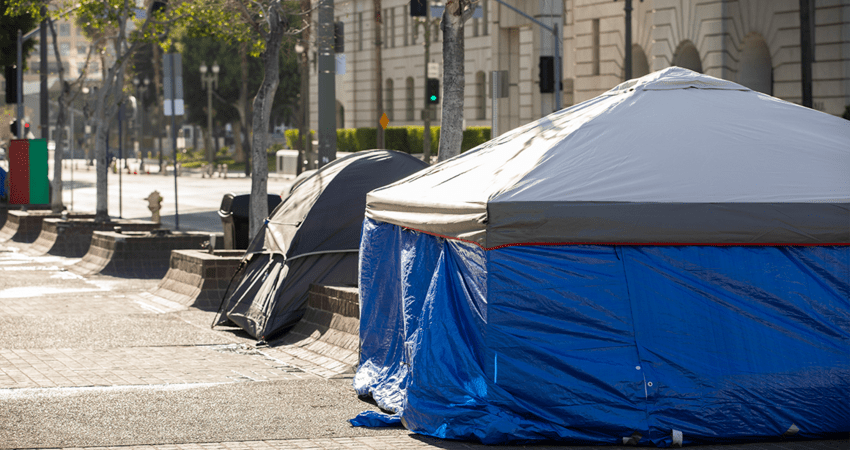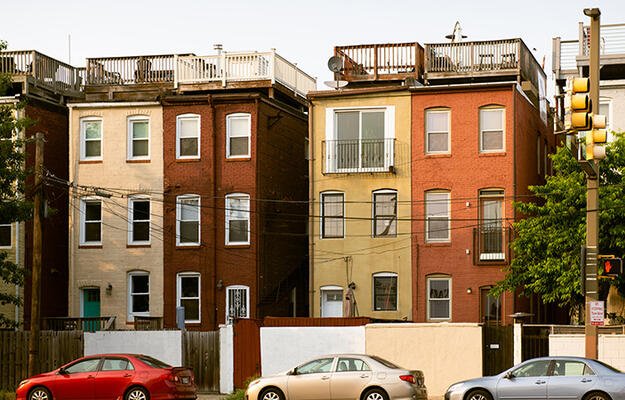
MattGush, Getty Images
Rising Trends and Impacts of Unsheltered Homelessness
- Title:
-
Unsheltered Homelessness: Trends, Characteristics, and Homeless Histories
- Author:
-
Samantha Batko, Alyse D. Oneto, Aaron Shroyer
- Source:
- Publication Date:
-
2020
Unsheltered homelessness—residing in places not meant for habitation like outside or in cars—can be particularly harmful because it can disconnect people from formal employment, exacerbate health issues, and generate extensive costs to local governments. The number of people enduring unsheltered homelessness has risen substantially since 2015, affecting hundreds of thousands of people annually. Recent data suggest this increase is disproportionately seen among particular people and in certain regions.
In this report, researchers assessed trends and characteristics of unsheltered homelessness and the factors that may have contributed to the increase of unsheltered homelessness between 2015 and 2019. The report summarizes a large body of data relating to demographic patterns and geographic correlates of unsheltered homelessness as highlighted by the Annual Homelessness Assessment Report as well as point-in-time counts. The report also analyzes how health and legal challenges affect public costs and service use by drawing on municipal budget reports and other related literature.
Increases in the number of people enduring unsheltered homelessness were traced to increases in “hot spot” Continuums of Care (CoCs)—governing bodies responsible for coordinating local or regional homeless assistance. Approximately 44 percent of people facing unsheltered homelessness nationwide resided in 14 areas, especially on the West Coast.
The unsheltered homeless population is particularly vulnerable, experiencing more health problems, involvement with the criminal legal system, and disconnect from formal employment. The research also highlights the expensive costs of unsheltered homelessness to local governments, as well as some notable demographic disparities within the population, including an overrepresentation of Black and Latinx people.
Key findings:
- People experiencing unsheltered homelessness are approximately 1 in 3 of the people experiencing homelessness overall.
- Unsheltered homelessness increased by 22 percent from 2015 to 2019, and hot-spot CoCs accounted for 83 percent of this growth.
- Between 2009 and 2019, the number of people in families with children in unsheltered locations dropped 71 percent, and the number of individuals living in unsheltered locations increased around 12 percent.
- Populations who were experiencing unsheltered homelessness but who were not chronically homeless (experiencing homelessness long term or repeatedly) rose 38 percent between 2015 and 2019.
- All 14 hot-spot CoCs have a higher share of households with both very low incomes (earning below 50 percent of the area median income) and severe housing cost burden (spending more than 50 percent of their income on housing).
- Women make up just under one-third of individuals experiencing homelessness, and despite being a small share of the overall number of people experiencing homelessness, individuals who identify as transgender are almost twice as likely to be unsheltered than sheltered.
- People who identify as Black or Latinx are significantly overrepresented among this population. Individuals who were experiencing unsheltered homelessness and identified as Black accounted for one-quarter of the overall increase nationally between 2015 and 2019, and individuals who identified as Latinx and were enduring unsheltered homelessness accounted for 31 percent of the increase between 2015 and 2019.
- People experiencing unsheltered homelessness are less likely to have completed high school and are more likely to have informal sources of income than people who live in sheltered locations.
- Surveys found that half of people experiencing chronic homelessness in unsheltered locations experienced depression, and 44 percent experienced anxiety.
- People enduring unsheltered homelessness were nine times as likely as people in shelters to have spent at least one night in jail in the past six months.
- The average number of days that people enduring unsheltered homelessness reported since being stably housed was more than six times that of people experiencing homelessness in sheltered locations.
- Thirty-five percent of men and 40 percent of women reported experiencing a violent attack while living in unsheltered locations.
Policy implications:
- Expansion of affordable housing and rental assistance programs in high-cost areas may reduce unsheltered homelessness and associated costs.
- Funding the Housing First approach to scale, particularly by supporting permanent supportive housing and rapid rehousing, could also help combat this problem.
- An increase in the number of people experiencing unsheltered homelessness means increased costs for municipal governments. To avoid these costs, cities and states should take proactive measures to prevent and end homelessness, rather than implementing strategies to criminalize unsheltered homelessness.


